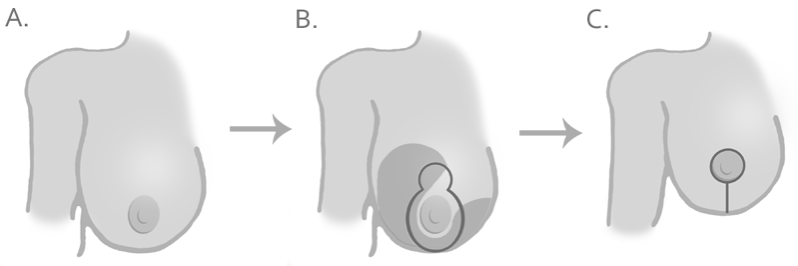Breast Reduction Surgery
Life-Changing Relief for Women with Large Breasts
Breast reduction surgery (reduction mammoplasty) is a transformative procedure that can dramatically improve your quality of life. As a specialist breast surgeon, I understand that living with overly large breasts affects far more than just your physical comfort—it impacts your confidence, lifestyle, and overall wellbeing.
Understanding Your Journey
The women I meet seeking breast reduction have often lived with the
burden of large breasts since puberty. Many have experienced:
Chronic back, neck, and shoulder pain
Difficulty finding well-fitting clothes and supportive bras
Skin irritation and rashes under the breast fold
Limitations in physical activities and exercise
Sleep difficulties and discomfort
Self-consciousness about their appearance
Postural problems from the weight of heavy breasts
Your feelings about your breasts are valid, and seeking relief through surgery is both common and medically appropriate.
The Benefits of Breast Reduction
Breast reduction surgery offers numerous life-enhancing benefits:
Physical Relief
Elimination or significant reduction of chronic pain
Improved posture and spinal alignment
Relief from skin irritation and chafing
Enhanced ability to participate in physical activities and sports
More comfortable sleep without needing to wear a bra to bed
Lifestyle Improvements
Greater choice in clothing styles and fit
Easier bra shopping with more size and style options
Increased confidence in social and professional settings
Freedom to enjoy activities previously limited by breast size
Aesthetic Enhancement
Breasts that are proportionate to your body frame
Lifted, more youthful breast contour
Improved symmetry between breasts
Natural-looking results that complement your figure
During our consultation, we'll have detailed discussions about:
Your Goals and Expectations Every woman's ideal outcome is different. Rather than simply aiming for the smallest possible size, we'll work together to determine what's right for your body and lifestyle. Some patients want to return to their pre-pregnancy breast size, while others prefer a size similar to a friend or family member. Bringing reference photos can help us align our vision for your results.
Surgical Planning I'll assess your breast anatomy, skin quality, and nipple position to recommend the best surgical technique. The amount of tissue to be removed will depend on your goals, body proportions, and what will achieve the most natural, long-lasting result.
Realistic Expectations We'll discuss the healing process, expected timeline for results, and what to expect during recovery. It's normal for patients to have mixed feelings as surgery approaches—some worry about being too small, others about not being small enough. Open communication helps ensure we're aligned on your desired outcome.
The Surgical Procedure
Breast reduction surgery is performed under general anaesthesia and typically takes 2-4 hours, depending on the complexity of your case. The procedure involves:
1. Tissue Removal: Excess breast tissue, fat, and skin are carefully removed
2. Nipple Repositioning: The nipple-areolar complex is moved to a more youthful position
3. Breast Reshaping: The remaining tissue is sculpted to create a natural, lifted contour
4. Incision Closure: Incisions are closed with dissolvable sutures for optimal healing
Your Next Steps
If you're considering breast reduction surgery, the first step is a comprehensive consultation where we can discuss your concerns, goals, and treatment options. During this appointment, I'll:
Perform a thorough breast examination
Discuss your medical history and current symptoms
Explain surgical options and techniques
Answer all your questions about the procedure and recovery
Provide detailed information about costs and scheduling
Frequently Asked Questions
Will my insurance cover breast reduction surgery?
In many cases, breast reduction is considered medically necessary and may be covered by private health insurance. We can help you understand your coverage and provide necessary documentation.
How long do results last?
Breast reduction results are generally long-lasting. However, significant weight changes, pregnancy, and aging can affect your results over time.
Will I be able to breastfeed after surgery?
While many women can breastfeed after breast reduction, the procedure may affect your ability to produce milk. We'll discuss this important consideration during your consultation.
When can I return to exercise?
Light activities can usually resume after 2 weeks, with full exercise clearance typically given at 6 weeks post-surgery.
Contact Us
Ready to take the next step toward freedom from the burden of large breasts? Contact my practice to schedule your consultation.




